#ISLAMic
Explore tagged Tumblr posts
Text
ATTENTION:
This is just the personal view of the author, It isn't a Dogma or an Absolute Truth
The Muslim Fist. That was an other name of the style that authors used as reference for Azula's Fire Bending.
Probably, nobody of the authors and writers had known this origins. But It's interesting for me.
That's why, in my personal view, every Azula's Redemption Arc should be influenced by Muslim Sufism, and as Persian was Fire and Arabia was Earth for Firdouzi and other medieval Persian authors, and Persia had a debt with Arabia for the religion part of Iran's identity, Islam, at the same time Azula's development should happened in the Earth Kingdom, the Place under her dignity but the only Place when She can find a Place to rule (as in Azula's in the Spirit Temple), and a Place that had a part in the formation of Fire Nation (in the Old Lore, when the actual Fire Nation's inhabitants were descendents of Bhanti, a people migrated by Earth Continent). Ah, for @camcat1320 (please, hear when you have time) @akiizayoi4869 and @wingchunwaterbender : here's my two personal themes of this personal interpretation of an Azula's Redemption Arc.
Severim Ben Seni, written by Yunus Emre, a XIII Century Sufi and singed by Farya Faraji
https://youtu.be/5TvIIYWmbBY?si=ly_2VKMvaBbQxs6Y
Safawids, a composition of different poems written by Shah Ismayl, Shahanshah of Safawid Dinasty of Iran (and Great Conqueror by the Age of 14 years, just like Azula, but with some mystical exagerations like believe of being the Incarnation of Caliph 'Alī and Master of the Twelve Imams), singed by Farya Faraji.
https://youtu.be/Hu877fewFK4?si=h2A2nlfCL7c_nQAo
Ah, I would a Sufi experience for Zuko too. Because Sufi meditation exercises and dhikr are based on respiration exercises, as we can hear and see in the videos (especially in the beginning of the Safawids video).
Fighting Styles: Azula
Today I’m going to take an in-depth look at Azula’s fighting style, which, after much debate between myself and my Sihing and Sidi, has been identified as a mix of Northern Shaolin and Chaquan/Chachuan (查拳). I’m mainly going to focus on Chaquan/Chachuan, because Northern Shaolin refers to a ton of different styles, and thus is not as easily defined, and Chachuan is what makes Azula’s fighting style unique in comparison with other firebenders. So let’s get started, shall we?
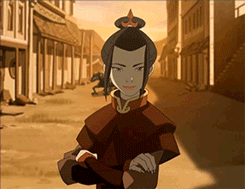
First, what exactly is Chaquan/Chachuan?
Chachuan (The Cha Family Fist) is a substyle of Changquan (長拳), a Northern style which literally translates into “The Long Fist”. Changquan is one of the most popular styles of kung fu in China, due to the “showiness” of its acrobatic forms, and is often performed at tournaments. While it does not technically fall under the category of “Northern Shaolin”, since it did not originate directly from Shaolin, Changquan contains many elements in common with Northern Shaolin styles, due to the constantly evolving nature of kung fu in China throughout history. It is said that the alleged creator of Changquan, Emperor Zhao Kuangyin, was greatly influenced by Shaolin styles, and the resulting prevalence of Changquan in turn greatly influenced the Northern Shaolin styles.
The four families of Changquan are: Cha (The Cha Family/Muslim Fist), Hua (The Hua Family/Flower Fist), Pao (The Cannon Fist), and Hong (The Red Fist). Azula specifically uses the Cha Fist (which itself is split into three different families of Zhang [faster, more agile, more compact], Li [more upright, more comfortable, more graceful], and Yang [more powerful, more continuous, and more direct], but due to the limitations of her fighting animations I cannot discern exactly which family style she uses).
The most notable contribution of Chachuan is the form known as Tantui, or the “Springing Legs” form. Many styles of kung fu, including Northern Shaolin, have incorporated Tantui (or some version of it) into their core curriculum. In fact, it is so ubiquitous, that the Chinese Government adapted the original Cha 10-Road Tantui System as the basis for the contemporary sport of wushu. Though the Tantui System has been adapted into the curriculum for many different styles, and nowadays can be considered a style of its own, the Cha Tantui remains unique due to its irregular, off-beat rhythm and angular strikes, as well as frequent angle changes, which are the defining characteristics of Chachuan.
Other notable characteristics include:
1. Balanced use of both hands and feet
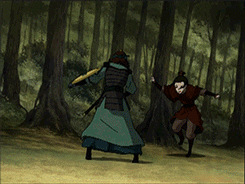

2. Heavy emphasis on a strong offense, as well as numerous counter-attacks, because Chachuan relies on a strong offense to provide defense…

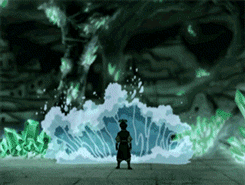
(…which coincides with Azula’s general style of fighting…)

3. Swift, forceful, and economical strikes, usually delivered at angles
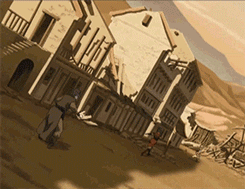


4. Wide extension of the limbs, to maximize the space between the body and the fist, keeping attackers at a safe distance


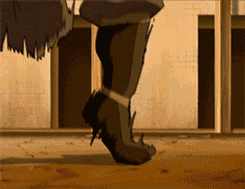
5. Arms outstretched and striking in two different directions, in order to increase the user’s awareness of their surroundings and their effectiveness versus multiple combatants
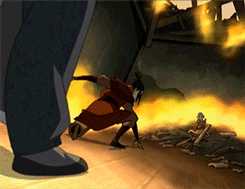
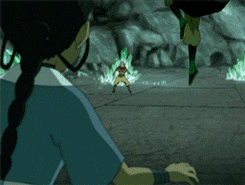
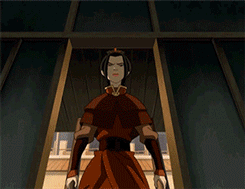
6. Sweeping blows, from both hands and feet (Azula is a big fan of the low sweeping kick in particular, which she performs at least 3 times during the series)


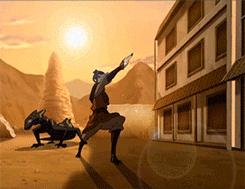

7. Impressive acrobatic kicks and leaps (The 10-Road Springing Legs Form provides the basis for this.)


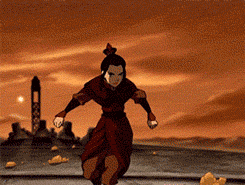

8. High degree of maneuverability, in contrast with more grounded forms like Tai Chi and Hung Gar
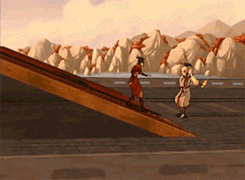

Chachuan is a style that is noted for its extreme beauty, elegance, and grace, as well as its acrobatic nature, versatility, and combat effectiveness. During the Tang Dynasty, it was the martial art of choice employed by soldiers in the Imperial Army due to its ability to fend off multiple opponents.

Unlike Northern Shaolin, where nearly every strike is delivered with a high degree of power, Chachuan’s forms and attack sequences are performed in continuous waves, with each movement leading into another, coalescing into a single (or multiple, depending on the situation) powerful strike(s) at the end.


Like any seasoned Chachuan user, Azula attacks in waves. She favors quick strikes that produce smaller bursts of flame, which usually culminate in one large burst at the end. The idea behind this is to chip away at your opponent’s weak spots with quick, soft blows, then finish them off with one or more hard blows at the end. The same applies to Azula, who likes to finish her fights with lightning generation (a Northern Shaolin form, but she performs it with the movement style of a Chachuan user).
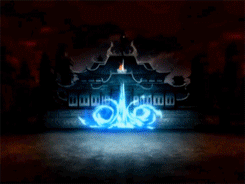

The odd rhythm of Chachuan lends to its general unpredictability, and, along with a number of “sneaky” moves, makes it one of several styles (such as Drunken or Monkey) that actively relies on deception to evade and quickly dispatch its opponents. Graceful, quick movements transition abruptly into powerful strikes, interspersed with steady stances and sudden stops. It has been said that Chachuan users are like candles blowing in the wind; dancing gracefully one second, but still and steadfast the next. Any time a Chachuan practitioner is standing still, you’d best be prepared to defend, dodge, or block yourself against a series of incoming attacks.


Because it is a physically demanding art form that requires a high level of flexibility, Chachuan users must begin training at a very young age, and most competitive performers of the art are quite youthful. It is also a popular style among young girls and women.
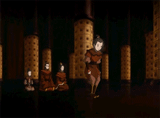
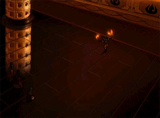

Chachuan is one of the few martial arts in the world which remains relatively unchanged over the course of time. It is a style that embodies contradiction and balance, and has been heralded as vigorous, yet precise, graceful and authoritative, elegant but forceful. In combat, skilled Chachuan practitioners must be extremely efficient, due to the high physical demand the acrobatic style places on its user. The prodigious skill required of a Chachuan practitioner, along with its renowned beauty and effectiveness, make it the style perfectly suited for Azula’s personality.
Random Notes:
The first form of Chachuan is called muzi (母子) or “Mother and Son”. The form Azula demonstrates as a child during “Zuko Alone” is very reminiscent of this form. Foreshadowing of her lingering resentment towards Ursa and Zuko, perhaps?
Interesting to note is that from Season 3 onwards, Azula begins wearing heavy armor. This would likely have impeded her ability to perform Chachuan to her full capacity, causing her to tire more quickly than normal.
Though Chachuan and Northern Shaolin have similar moves, the execution style overall is different. You can see the difference between the way Zuko bends and the way Azula bends. Zuko’s strikes tend to demonstrate a noticeable exertion of force and power (heavily external hard blows), whereas Azula’s strikes exert force abruptly and unexpectedly. Another noticeable difference is in the posture; while Zuko’s stances tend to be more upright, like most Northern Shaolin stances, while Azula’s stances more often include angles or leaning due to the elements of Chachuan in her style. (If you’re interested in seeing the differences in these two forms, watch a video of the Tantui form as performed by a Northern Shaolin practitioner and a Chachuan practitioner.)
Chachuan is called The Muslim Fist because it was allegedly founded by Cha Shang Mir, a Muslim General in the Chinese army, and was predominantly taught to and practiced by Muslims in ancient times. Nowadays, it is one of the more popular styles of Changquan taught in China, though it is still extremely popular among the Northern Islamic population.
The style of Chachuan is deeply rooted in Northern Chinese-Islamic philosophy and spirituality. Its key principle is the idea of achieving harmony and balance by embodying contrasting elements. When Azula is “off” in Sozin’s Comet (Zuko subtly noting her loss of sanity and inner balance), her fighting style suffers considerably.
And that’s the long summary of a short glimpse at Chachuan. If you want moves like Azula, go out and learn some Cha Fist!
#atla#avatar the last airbender#azula#atla azula#princess azula#islamic#sufism#sufi wisdom#sufi#shah ismayl#farya faraji#i love this guy#in my mind he is the physical appearance of an adult Sokka#well not so much#but i thought that when i was a child#avatar the legend of aang#azula redemption
4K notes
·
View notes
Text

#islam#islamic#islampost#art#islamdaily#reminder#ummah#deenoverdunya#duaa#allah#quran kareem#quraan#quran#quotes#allah is kabir#allahﷻ#dua#drawing#picture#wallpaper#arabic#words#free lebanon#free palestine#free gaza
259 notes
·
View notes
Text
To the person reading this...
May Allah grant you better—better taqwa, better character, better health, and better than what you had and lost in all aspects of life.
And above all, may He grant you the best of the Hereafter.
Allahumma Ameen.
#islampost#islamdaily#islamicreminders#muslim#halal#islam#islamic#quran#islamiyet#allahuakbar#quranandsunnah#quranquotes#quran ayah#quranverses#sunnah#quran kareem#alhamdulillah#muslims#muslim couple#muslim man#islam help#welcome to islam#islamislove
69 notes
·
View notes
Text

Beautiful morning 🌻
Cairo, Egypt 🌿🕊️
#يوميات بنت إسمها ش#egypt#مصر#photography#thisisegypt#art#masterpiece#cairo#shaimaa fekry#islamic#islamic architecture#architecture#travel#history#heritage#culture#minaret#mosque#old city#golden hour
57 notes
·
View notes
Text

#quran#holy quran#quranic#quran kareem#quranverses#quran ayah#quranquotes#quranandsunnah#islam#Islamic Art#islamic#islamic design#Convert to Islam#IslamQuotes#islamicquotes
55 notes
·
View notes
Text

#islamicpost#islamicquotes#islam help#islampost#islamdaily#welcome to islam#islamic#islamislove#tumblrpost#life quote#beautiful words#kindness#kindnessismagic#lovekindesshappiness
30 notes
·
View notes
Text

#quran#quranic#holyquran#islam#hadith#UmmahStreams#islamic#islamdaily#allah#Muslim#quranverses#quranquote#quranquotes#qurandaily#quran_kareem#qurantranslation#quranreminder#quranayat#qurandigital
35 notes
·
View notes
Text

#islam#Islamic Art#islamic#Convert to Islam#islamicquotes#islamiyet#islamicreminders#Islamic reminders#islamic posts#islamicreminder#islam daily#islamdaily#deenislam#islampost#Muslim#muslimah#muslim art#muslim reminder#howtomuslim#Deen#deenoverdunya#quran#holy quran#quran kareem#quranandsunnah#quranquotes#quran ayah
26 notes
·
View notes
Text
Ibn al-Qayyim رحمه الله:
❝The perfection of man is based on these two abilities: Knowledge and love. And the best knowledge is the knowledge about Allāh, and the highest love is the love for His sake.❞
[al-Fawā’id | Pg. 83]
#islam#islamic#muslim#muslimah#islamdaily#islamic quotes#islamicreminders#islamicquotes#islamic posts#islamislove#muslim reminders#muslim reminder#muslim ummah#dawah#deenislam#deenoverdunya#prophetmuhammadﷺ#prophet muhammad#hadith#hijab#dua#alhamdulillah#allahﷻ#allah#allahswt#quranquotes#quran#quran kareem#reminder#wisdom
26 notes
·
View notes
Text

عن عياض بن حمار رضي الله عنه قال: قال رسول الله صلى الله عليه وسلم : «إِنَّ اللَّهَ تَعَالَى أَوْحَى إلَيَّ: أَنْ تَوَاضَعُوا، حَتَّى لَا يَبْغِيَ أَحَدٌ عَلَى أَحَدٍ، وَلَا يَفْخَرَ أَحَدٌ عَلَى أَحَدٍ». صحيح مسلم حديث ٢٨٦٥
‘Iyād ibn Himār (may Allah be pleased with him) reported that the Prophet (may Allah's peace and blessings be upon him) said: "Verily, Allah, the Exalted, revealed to me that you must be humble, so that no one oppresses another or boasts of oneself before another." Sahih Muslim 2865d In-book reference : Book 53, Hadith 79
فمنها حديث عياض بن حمار رضي الله عنه قال: قال رسول الله صلى الله عليه وسلم: ((إن الله أوحى إليَّ أنْ تواضَعوا))؛ يعني أن يتواضع كلُّ واحد للآخر ولا يترفع عليه؛ بل يجعله مثله أو يكرمه أكثر، وكان من عادة السلف رحمهم الله أن الإنسان منهم يجعل من هو أصغر منه مِثلَ ابنه، ومن هو أكبر مثلَ أبيه، ومن هو مثلُه مثلَ أخيه، فينظر إلى من هو أكبر منه نظرةَ إكرام وإجلال، وإلى من هو دونه نظرةَ إشفاق ورحمة، وإلى من هو مثله نظرةَ مساواة، فلا يبغي أحد على أحد، وهذا من الأمور التي يجب على الإنسان أن يتصف بها؛ أي بالتواضع لله عزَّ وجلَّ، ولإخوانه من المسلمين. شرح ابن عثيمين لرياض الصالحين
والفرق بين التواضع والمهانة أن التواضع يتولد من بين العلم بالله سبحانه ومعرفة أسمائه وصفاته ونعوت جلاله وتعظيمه ومحبته وإجلاله، ومن معرفته بنفسه وتفاصيلها وعيوب عمله وآفاتها، من بين ذلك كله خلق هو التواضع وهو انكسار القلب لله وخفض جناح الذل والرحمة بعباده فلا يرى له على أحد فضلا ولا يرى له عند أحد حقا بل يرى الفضل للناس عليه والحقوق لهم قبله، وهذا خلق إنما يعطيه الله عز وجل من يحبه ويكرمه ويقربه. وأما المهانة: فهي الدناءة والخسة وبذل النفس وابتذالها في نيل حظوظها وشهواتها كتواضع السفل في نيل شهواتهم وتواضع المفعول به للفاعل وتواضع طالب كل حظ لمن يرجو نيل حظه منه فهذا كله ضعة لا تواضع والله سبحانه يحب التواضع ويبغض الضعة والمهانة: وفي الصحيح عنه صلى الله عليه وآله وسلم "أوحىِّ إلىِّ أن تواضعوا حتى لا يفخر أحد على أحد ولا يبغي أحد على أحد" والتواضع المحمود على نوعين: النوع الأول: تواضع العبد عند أمر اللّه امتثالا وعند نهيه اجتناباً فإن النفس لطلب الراحة تتلكأ في أمره فيبدو منها أنواع الإباء... هرباً من العبودية وتثبت عند نهيه طلباً للظفر بما مُنع منه فإذا وضع العبد نفسه لأمر اللّه ونهيه فقد تواضع للعبودية. والنوع الثاني: تواضعه لعظمة الرب وجلاله وخضوعه لعزته وكبريائه، فكلما شمخت نفسه ذكر عظمة الرب تعالى وتفرده بذلك، وغضبه الشديد على من نازعه ذلك، فتواضعت إليه نفسه، وانكسر لعظمة الله قلبه، واطمأن لهيبته وأخبت لسلطانه، فهذا غاية التواضع وهو يستلزم الأول من غير عكس. والمتواضع حقيقة من رزق الأمرين. واللّه المستعان. تفسير ابن القيم
A Muslim is commanded to be humble as humbleness is an honorable trait possessed by the true believers. The command to be humble is revealed by Allah, the Exalted, to His Prophet Muhammad (may Allah's peace and blessings be upon him) and this is clear evidence of its importance. This is because the one who humbles oneself will submit and surrender to the commands of Allah, the Exalted, and act upon them and avoid His prohibitions. Also, he will show humbleness towards people. The Hadīth forbids Muslims from taking too much pride in and boasting of the good traits and achievements they have, particularly when the motive is to behave haughtily and arrogantly with people. Translation/ Explanation : EnglishUrdu Spanish Indonesian Bengali French Turkish Russian Bosnian Indian Chinese Persian Vietnamese Tagalog Kurdish Hausa: https://hadeethenc.com/en/browse/hadith/5497
#أحاديث نبوية#حديث#اللهم صل وسلم على نبينا محمد#رسول الله صلى الله عليه وسلم#النبي صلى الله عليه وسلم#النبي محمد صلى الله عليه و آله وسلم#الرسول صلى الله عليه وسلم#وحي#تواضع#التواضع#بغي#فخر#الفخر#خلق#أخلاق#صلوا على النبي محمدﷺ#allah almighty#hadith#ahadeth#hadeth#muslim#islam#sunnah#hadith sahih#prophet muhammad#prophet muhammed pbuh#islamic#manners#hadiths#humble
28 notes
·
View notes
Text


#makah#kaaba#🕋#islam#islamic#islampost#art#islamdaily#reminder#ummah#deenoverdunya#duaa#allah#picture#words#photoshoot#photography#allahﷻ#allah is kabir#quran kareem#quraan#quran#quotes#wallpaper#religion#daily duaa#qoutes#dawah#free gaza#free palestine
49 notes
·
View notes
Text
If you ask Allah to lead you, don’t be surprised when He leads you to make sacrifices, when He leads you to dark times, when He leads you to uncomfortable situations. It’s those things that make us want to cling closer to Allah. When Allah is leading you, the pathway you are travelling will invariably bring you closer to Him.
#muslim#allah#islamicreminders#muslim ummah#deen#tawakkal#allahuakbar#dawah#deenoverdunya#islamification#islamic jihad#islamicquotes#islamic knowledge#islam#islamic#islamdaily#islamicpost#islamicreminder#sabar#patience#closer to allah#muslim women#sunnah#allahuekber#one allah#hadith#quraan#quranic#one ummah
21 notes
·
View notes
Text

#islam#islamic#muslim#muslims#islamic reminders#muslim reminders#reminders#Allah#trending#explore#foryoupage#foryou#fyp#tumblr fyp#hadithoftheday#islamicquotes#islamdaily#hijab#peace#ease#happiness#quotes#ramadanreminders#ramadan 2025#muslimah#education#muslim reminder#al quran#alquran#holy quran
20 notes
·
View notes
Text

Blessed Friday 🕊️
Cairo, Egypt 🌿🌻
#يوميات بنت إسمها ش#egypt#مصر#photography#thisisegypt#art#masterpiece#cairo#shaimaa fekry#islamic#islamic architecture#architecture#travel#history#heritage#culture#minaret#mosque#old city#frame#sillouhette#silhouette
24 notes
·
View notes
